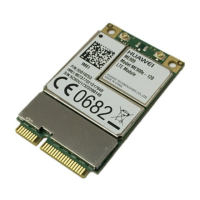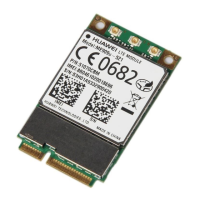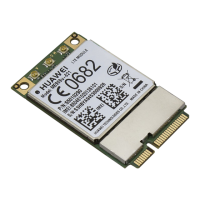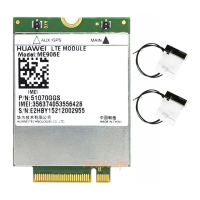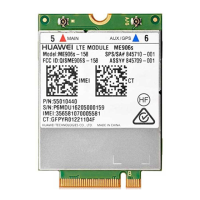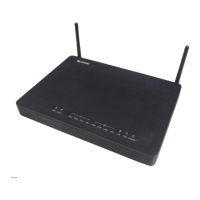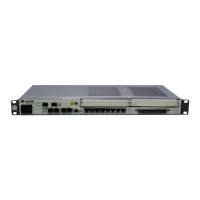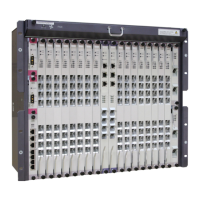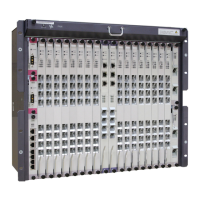HUAWEI ME909s Series LTE Mini PCIe Module
Hardware Guide
Electrical and Reliability Features
Huawei Proprietary and Confidential
Copyright © Huawei Technologies Co., Ltd.
All power consumption test configuration can be referenced by GSM Association Official
Document TS.09: Battery Life Measurement and Current Consumption Technique.
LTE test condition: 10/20 MHz bandwidth, QPSK (Quadrature Phase Shift Keying), 1 RB
when testing max. Tx power and full RB when testing 0 dBm or 10 dBm.
Test condition: For Max. Tx. power, see 4.4.2 Conducted Transmit Power, which are listed
inTable 4-5 and Table 4-6 ; for Max. data throughput, see 2.2 Function Overview, which are
listed in Table 2-1 .
5.5 Reliability Features
Table 5-11 lists the test conditions and results of the reliability of the ME909s Mini
PCIe module.
Table 5-11 Test conditions and results of the reliability of the ME909s Mini PCIe module
Temperature: –40ºC
Operation mode: no
power, no package
Test duration: 24 h
Visual inspection: ok
Function test: ok
RF specification: ok
Temperature: 85ºC
Operation mode: no
power, no package
Test duration: 24 h
Visual inspection: ok
Function test: ok
RF specification: ok
Low-temperature
operating
Temperature: –40ºC
Operation mode:
working with service
connected
Test duration: 24 h
Visual inspection: ok
Function test: ok
RF specification: ok
High-temperature
operating
Temperature: 85ºC
Operation mode:
working with service
connected
Test duration: 24 h
Visual inspection: ok
Function test: ok
RF specification: ok
Temperature
cycle operating
High temperature:
85ºC
Low temperature:
–40ºC
Operation mode:
working with service
connected
Test duration: 30
cycles;1 h+1 h/cycle
Visual inspection:
OK
Function test: OK
RF specification:
OK
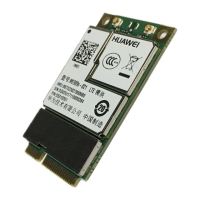
